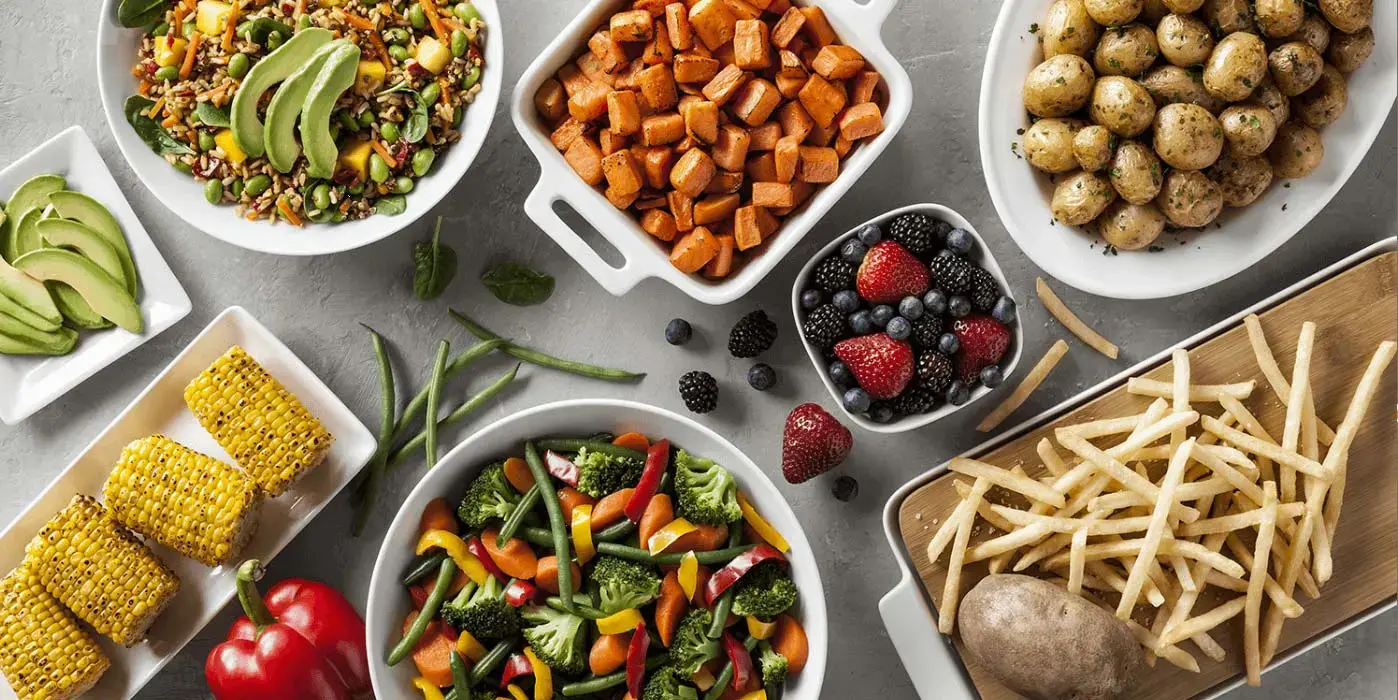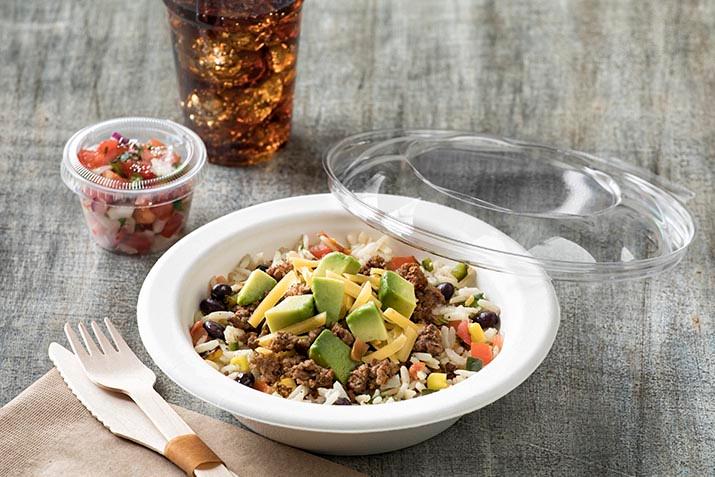College and University
C & U Best Practice: Frozen, Fresh or Canned?
4/25/2019

Popeye nailed it in 1929 when he started telling generations of kids to eat their spinach if they wanted to be strong!
We now know even more about the value of fruits and vegetables in our diets, not just vitamins and minerals, but fiber and antioxidants. Today's college students have been hearing about the value of fruits and vegetables throughout their childhood, and many of them are very attuned, even committed, to a plant-based diet. A recent study showed that fully a quarter of 25- to 34-year-old Americans, just post-college age, declare themselves to be vegans or vegetarians.1
So, in college foodservice, serving plenty of vegetables is a given. You want high quality to preserve those vitamins and minerals while staying on budget and avoiding waste. What works for you and your students? Fresh? Canned? Frozen?
The three big questions are:
- Fresh, frozen, canned--which fits my foodservice operationally?
- Which option provides the best value and keep your budget on track?
- In which form are the vegetables actually going to be accepted and consumed?
Fresh: Delivers the most nutritional value... or does it?
Most of us think that fresh can deliver the most nutrition and value. But fresh isn't always that fresh! Fresh vegetables are picked, wait several days for transit, make it to a warehouse where there may wait a few more days, then to you where you may keep them for several more days before serving. Nutrition and flavor definitely get lost in this delay, along with some inevitable spoilage.2
Still, in a 2017 study commissioned by the USDA, two-thirds of respondents indicated that they preferred fresh over canned, frozen or dried vegetables.3
Fresh is often more expensive than frozen or canned, simply because of the immediacy required for use, inevitable spoilage loss, and the cost of storage of fresh produce.
So, fresh isn't necessarily the most economical nor the most nutritious. Other drawbacks to consider include:
- Fresh is labor-intensive with plenty of cleaning, trimming, chopping and cutting
- Fresh variety is limited by growing seasons
- Fresh pricing fluctuates throughout the year
- Fresh is often harvested prior to peak ripeness to extend shelf life, reducing its taste, texture and appeal
- Fresh produces significant waste due to trimming and unusable items, as well as spoilage
Frozen: Saving nutrients, saving prep time, reducing waste
Eating Well online magazine looked at the issue of fresh vs frozen and concluded that frozen vegetables may be more healthful than some of the fresh produce sold in supermarkets.4
Why? Fruits and vegetables chosen for freezing are harvested and processed at their peak ripeness, a time when, as a general rule, they are most nutrient-packed.
Fruits and vegetables for shipping are generally picked before they are ripe, which means they have not had time to develop the same nutrient value they would have had if allowed to ripen still attached to the plant.
On the other hand, the first step of freezing is to blanch in hot water or steam. This process kills bacteria and stops the ripening process. The flash-freeze that follows locks in the nutrients and eliminates any further loss of nutrition resulting from food-degrading enzymes.
Frozen fruits and vegetables give you:
- Flexibility to use only what is needed, preserving extra for another day
- Year-round availability
- Great taste and texture
- Budgeting you can count on
- 100% usability without all the labor
A special note about avocados
Serving many avocados or guacamole these days? Simplot has done an analysis of fresh versus our chilled/frozen avocados, and the results may surprise you.
Using fresh avocados means a loss of 45% - between the pit, the peel, loss of moisture and spoilage. And about 12 minutes of labor time for every three pounds of avocados.
Canned: Shelf stable, but limited in taste, texture, color
Like frozen, canned vegetables are usually processed at peak of ripeness, but are further processed than frozen.
Blanching, use of salt, water or syrup (to retard spoilage) and other additives mean less fresh taste. Few canned vegetables (notable exceptions are tomatoes, pumpkin, corn and beets) retain their original appetizing color.
The extra weight from canning material and packing liquid can also mean a higher cost for the final usable product.
The biggest advantage is that canned is highly shelf stable and requires no refrigeration. But then, there is the issue of recycling the packaging.
The best options for your fruit and vegetable sourcing
Some items just don't work any way but fresh! Salad bar ingredients, lettuce and tomato for sandwiches, kale for smoothies - you'll always need access to fresh.
But frozen is great too and a perfect complement to fresh. Simplot's frozen fruits and vegetables are harvested at peak ripeness and processed shortly after harvest, locking in nutrition, texture and color. And frozen products are available year-round, with no seasonality issues, keeping your menus popping with color, freshness and variety.
1 The Economist: The World in 2019 https://worldin2019.economist.com/theyearofthevegan?utm_source=412&utm_medium=COM
2 Livestrong.com, Fresh Versus Frozen Produce: Which is Healthier? https://www.livestrong.com/article/71064-fresh-versus-frozen-produce-which-healthier/
3 2017 Fresh Fruit and Vegetable Program The Evidence is Clear: Fresh Works https://www.unitedfresh.org/content/uploads/2014/07/FFVP-One-Pager-2017.pdf
4 Eating Well: Fresh vs. Frozen Vegetables: Are we giving up nutrition for convenience? http://www.eatingwell.com/article/290575/fresh-vs-frozen-vegetables-are-we-giving-up-nutrition-for-convenience/
- Delivery
- Planificación de menús
- Sustentabilidad
- Tendencias alimentarias
- Vacaciones
- Limited Service Restaurant
- Full Service Restaurant
- Trend Feast
- Deli
- New Products
- Marketing
- Retail
- Benefits of Frozen
- Labor and Staff
- College and University
- K-12
- Vegetables
- News
- Covid-19 Resources
- From the Test Kitchen
- Kitchen Stories
- French Fries



